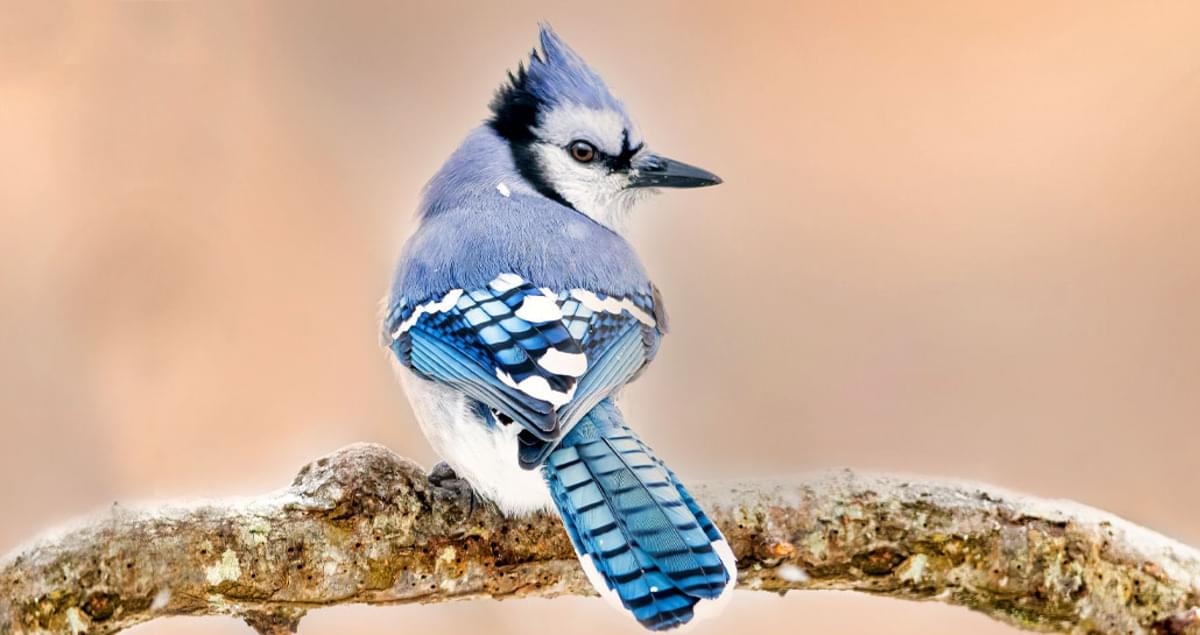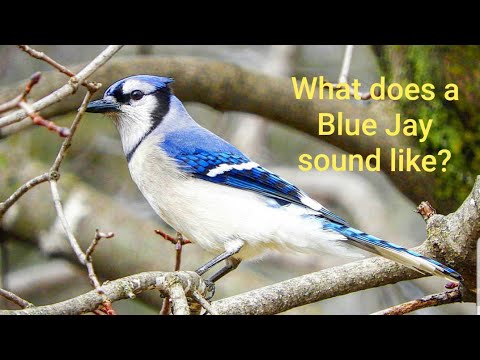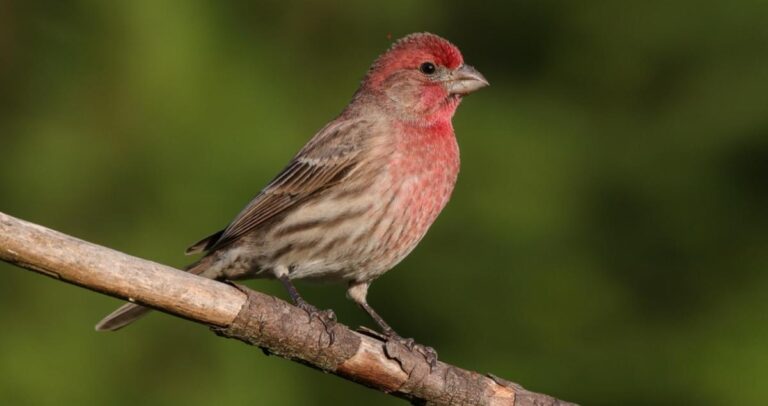What Does a Blue Jay Sound Like
A Blue Jay sounds like a distinct combination of high-pitched screeches and melodic whistling. Blue Jays have a unique and recognizable vocalization that sets them apart from other birds.
Their calls include short, piercing notes and clear whistling sounds. They are also known to imitate other bird calls, alarm calls, and even some human sounds.
Their vocal repertoire is diverse and versatile, allowing them to communicate with other Blue Jays, establish territories, and alert their flock of potential threats.
If you are lucky enough to hear a Blue Jay, you will likely be treated to a symphony of loud, energetic, and occasionally obnoxious sounds that contribute to the characteristic ambiance of the great outdoors.
So, keep an ear out for these vibrant blue birds and listen for their captivating and unmistakable vocalizations.
Understanding The Blue Jay’s Vocalizations
The Blue Jay is known for its distinctive vocalizations. Understanding these sounds can provide valuable insights into the behavior and communication patterns of this fascinating bird species.
The Blue Jay’s vocal repertoire is quite diverse, consisting of various calls and songs.
These vocalizations serve different functions, including alarm calls, territorial defense, and mating displays. By carefully decoding these sounds, researchers and enthusiasts can gain a deeper understanding of the Blue Jay’s behavior and communication strategies.
Decoding the different calls of the Blue Jay is particularly important as it can help identify potential threats or predators in the area.
Alarm calls, for example, alert other Blue Jays and nearby birds of potential danger. This can lead to the formation of larger groups, known as mobs, to ward off potential threats and protect their territory.
Furthermore, studying the Blue Jay’s vocalizations can also shed light on their social structure and breeding habits.
Mating calls, for instance, are often used to attract potential mates and establish pair bonds.
By paying attention to these vocalizations, researchers can gain insights into the Blue Jay’s reproductive strategies and courtship behavior.
In conclusion, understanding the Blue Jay’s vocalizations is crucial for understanding their behavior, communication, and social dynamics.
By decoding the different calls, researchers and enthusiasts can unravel the intricate world of the Blue Jay and appreciate its unique vocal repertoire.
The Signature Call: What Does A Blue Jay Sound Like
Exploring the classic “jay-jay” call, one can observe the variations and meanings behind it.
The Blue Jay’s call is distinctive and easily recognizable, often imitating other birds and animals. This ability showcases the Blue Jay’s intelligence and communication skills in the bird world.
One of the variations in their call is a loud, piercing “jeer” or “jay-jay” sound. This call is typically used to signal danger or alert other Blue Jays of potential threats.
It serves as a warning to the rest of the flock and reinforces their social structure.
Another fascinating aspect of the Blue Jay’s call is its use of mimicry. Blue Jays are known to imitate the calls of other birds, such as hawks or even the sounds of squirrels.
This mimicry helps them deceive predators or trespassers by creating confusion and avoiding detection.
The “jay-jay” call is just one example of the Blue Jay’s vocal repertoire. By understanding and appreciating these vocalizations, we can gain further insight into the fascinating world of avian communication.
The Alarm Calls: Cries Of Danger
Blue Jays are known for their distinct calls and vocalizations, particularly their alarm calls which serve as cries of danger.
Identifying these shrill warning screams is crucial to understanding their behavior.
Blue Jays have different types of alarm calls, each with its own purpose.
The most common is the “jay” call, a loud and harsh cry that alerts other birds in the area of potential threats such as predators. This call is often accompanied by aggressive behavior, as Blue Jays attempt to drive away the danger.
Another alarm call is the “rattle” call, characterized by a series of rapid and harsh notes.
Blue Jays use this call to communicate the presence of a ground predator, such as a snake or a cat. The rattle call serves as a warning to other birds nearby and helps them stay vigilant.
Blue Jays also have a “whistle” call, which is softer and more melodic compared to their alarm calls. This call is often used to communicate with other Blue Jays in their social group, signaling a change in their location or a potential food source.
When interacting with other bird species, Blue Jays can exhibit both aggressive and cooperative behaviors.
They are known to form mixed-species foraging flocks, where they associate with other birds to increase their chances of finding food and protection against predators.

Credit: www.allaboutbirds.org
The Courtship Calls: Songs Of Love
Blue Jays are known for their melodious calls during courtship, creating a symphony of sounds that captivates the listener.
These vocal displays are not only mesmerizing but also play a significant role in pair bonding.
Blue Jays have a vast repertoire of calls, each serving a unique purpose. From soft warbles to loud squawks, these complex vocalizations help establish and maintain the connection between mates.
They communicate their readiness for pairing, display their affection, and reinforce the emotional bonds that form the foundation of their relationship.
By matching their calls, they create intricate duets that intertwine their voices, a testament to their deep connection.
These courtship calls serve as an intimate conversation between partners, conveying their commitment and strengthening their bond.
Listening to the songs of Blue Jays is like witnessing a magical serenade of love, where each note paints a beautiful picture of devotion and affection.
So, if you ever wonder what a Blue Jay sounds like, be prepared to be enchanted by the harmonious melodies of courtship.
The Aggressive Calls: Defending Territory
A Blue Jay’s calls can vary depending on the situation, but when it comes to defending its territory, the bird becomes highly vocal and aggressive.
These aggressive calls can range from screeches to squawks, often making it apparent to other birds and potential threats that this particular area is occupied.
By analyzing the different sounds, we can gain insights into the Blue Jay’s territorial behavior.
The screeches and squawks are not just random noises; they serve as a warning to other birds to stay away. These calls act as a deterrent, signaling that the Blue Jay is ready to defend its space.
Understanding the purpose of these aggressive calls is essential for bird enthusiasts and researchers.
By observing and recognizing the distinct vocalizations, we can further appreciate the intricate communication systems present in nature.
The Contact Calls: Staying Connected
The soft notes used for intra-flock communication, called contact calls, play a crucial role in the social dynamics and cohesion of Blue Jays.
These calls serve as a way for Blue Jays to stay connected within their flock.
Investigating the purpose and significance of contact calls unveils the importance of these vocalizations in maintaining flock cohesion and social interaction.
The purpose of contact calls goes beyond simple communication.
They help Blue Jays coordinate their movements, keep track of each other’s whereabouts, and provide a sense of security within the flock.
These soft notes serve as an audible thread that keeps individuals connected and strengthens the bond between them.
Flock cohesion is crucial for Blue Jays to thrive and be successful in various aspects of their lives, such as foraging, predator detection, and mating.
Contact calls allow Blue Jays to quickly and efficiently relay information among flock members, enabling them to act as a coordinated unit.
Beyond Vocalizations: Non-vocal Sounds Of Blue Jays
In addition to their vocalizations, Blue Jays also produce a variety of non-vocal sounds.
These sounds include wing noises, beak snapping, and bill clacking. Wing noises are created by the movement of their wings and can be heard during flight or as they hop around.
Beak snapping and bill clacking are often used as forms of communication and can signify aggression, territorial defense, or an attempt to establish dominance.
These non-vocal sounds have important implications and possible functions in the behavior of Blue Jays. Wing noises can help individuals recognize and locate one another, especially during territorial disputes.
Beak snapping and bill clacking may serve as warning signals or communication to other members of their social group.
By producing these distinct sounds, Blue Jays are able to convey messages and establish their presence in the environment.
Blue Jay Calls: A Language Still Unraveling
Blue Jays are known for their distinctive vocalizations, which include a variety of calls and songs.
Current research on Blue Jay vocalizations is shedding new light on the complexity of their language.
Advances in technology have played a significant role in deciphering their calls and understanding their communication patterns.
By studying the acoustic structure of their vocalizations, researchers have been able to identify different types of calls, such as alarm calls, territorial calls, and contact calls.
The ongoing study of avian communication not only helps us understand the behavior of Blue Jays but also has wider applications.
By comparing the vocalizations of different bird species, scientists can gain insights into the evolution of communication systems.
Furthermore, understanding avian communication can have practical implications for conservation efforts and wildlife management.
By identifying specific calls associated with threats or distress, researchers can develop strategies to mitigate negative impacts on bird populations.
Preserving Nature’s Symphony: Conservation Efforts
Blue Jays, beautiful songbirds native to North America, face a range of threats that pose significant challenges to their survival.
Loss of habitat due to urbanization, deforestation, and the spread of invasive species is a major concern.
These factors disrupt the delicate balance required for their existence.
Additionally, climate change is impacting their migratory patterns and altering the availability of food sources, which further compounds their vulnerability.
Pesticides and other contaminants polluting the environment have detrimental effects on the health of these birds.
Preserving the habitats of Blue Jays is crucial for their survival and the overall health of ecosystems. Efforts to conserve forests, including reforestation and creating protected areas, are essential for providing them with appropriate nesting and foraging habitats.
Implementing sustainable logging practices and controlling the spread of invasive species help mitigate habitat loss.
Protecting water sources and reducing pollution are vital for maintaining a healthy environment for Blue Jays and other wildlife.
Blue Jays play a vital role in ecosystems as seed dispersers and insect controllers. By consuming and distributing seeds, they contribute to the regeneration and diversification of plant species.
Blue Jays also help control insect populations by preying on pests such as caterpillars and beetles. Their presence enriches the biodiversity of forests and encourages the establishment of complex food webs.
Conserving Blue Jays ensures the preservation of a harmonious symphony of nature, where each species plays a crucial part.
FAQs On Blue Jay Sounds
What Is Mistaken For A Blue Jay?
The blue jay is often mistaken for the indigo bunting or the blue grosbeak due to their similar blue plumage.
Why Is A Blue Jay Screaming At Me?
A blue jay may scream at you as a warning or to defend its territory. It could also be trying to communicate with other jays nearby.
How Does A Jaybird Sound?
The jaybird sounds like a variety of different musical notes, including shrill calls and melodic whistles. Its unique vocalizations are often loud and clear, making it easy to identify in outdoor environments.
Do Blue Jays Mimic The Sounds Of Other Birds?
Yes, Blue Jays are known to mimic the sounds of other birds.
Conclusion
The unique sounds of a Blue Jay are a fascinating aspect of these beautiful birds. From their distinct calls and mimicry skills to their various vocalizations, listening to a Blue Jay can provide both entertainment and insight into their behavior.
So, the next time you hear their raucous calls or mimicked sounds, take a moment to appreciate the vibrant and expressive communication of the Blue Jay.



